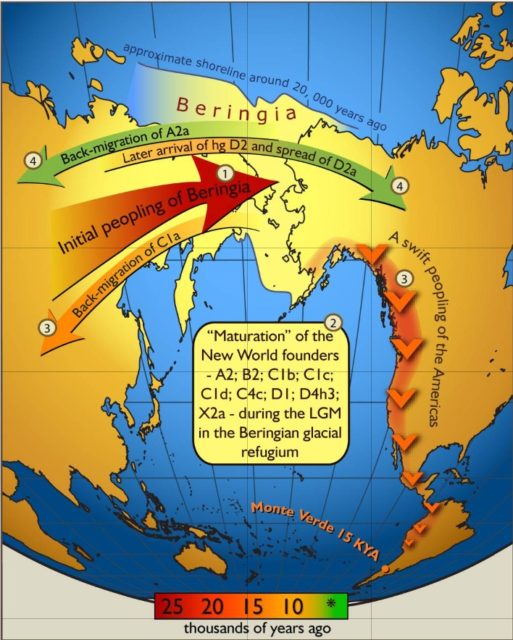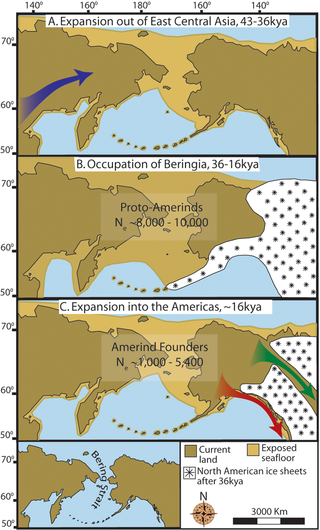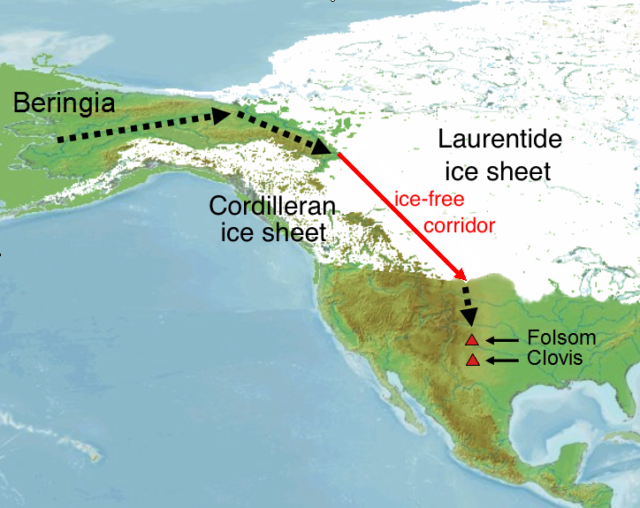The traditional theory of how humans migrated to America has been that they crossed an ancient land bridge connecting Russia and Alaska, and then traveled south along an ice-free corridor. However, a new study claims that this ice corridor could not have been used earlier than about 12,600 years ago, because of the harsh conditions and lack of resources.
Many projections show that humans populated the American continent several hundred years earlier than this, so if this theory is true it means migration must have occurred via some other route.

A comprehensive DNA study using evidence from pollen, macrofossils, and lake sediment samples from along this ice corridor has given scientists an idea of when and how different animals and plants evolved along the route. The study concluded that the area would have been too barren to accommodate migrating humans until long after the continent was settled.
It was around 12,500 years ago that the area began to support the animal and plant life that would have provided critical food resources for the migrants. The landscape later evolved into the spruce and pine dominated forest that characterizes the area today.

These early humans who settled the American continent are known to scientists as the Clovis Culture, and they first appear on the archaeological record around 13,000 years ago. Though later waves of immigrants may have used this ice corridor, the study shows that the Clovis must have initially used some other route. It has been suggested that this alternate route would have followed the Pacific coastline south towards the more hospitable climate of central America. This path would not have been easily traversable, as the Pacific coast back then did not have the accommodating weather it does in the present day. The journey would have been brutal, and for many, lethal.

Even though scientists haven’t determined the exact path that was used for the first migration to America, the new discovery brings light to a haunting truth: the first Americans had to endure some treacherous conditions before they earned their new paradise away from the frigid north.
It seems that we still have a lot to learn about our ancestors. History still has thousands of untold stories that ultimately shaped our modern civilization. What do you think? Did the Colvis culture use the Pacific coast to support their journey through uninhabited land or were they more resourceful than what we previously expected?
